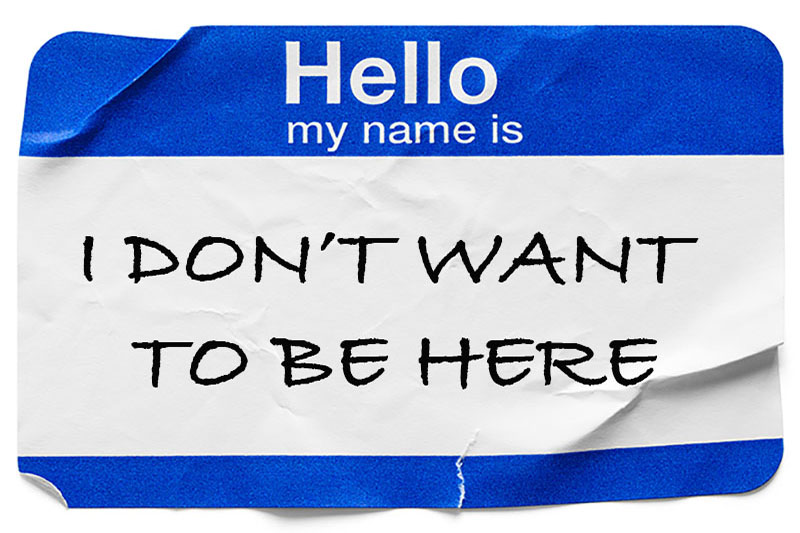Business Development
Talking to Strangers: How to Effectively Engage in Face-to-Face Networking
- BY Jill Clark
Rick Springfield probably wasn’t thinking of business development when he sang, “Don’t talk to strangers.” Meeting and talking to professionals are the lifeblood of networking and promoting your practice. Now that COVID-19 is no longer considered a health emergency in the United States, it’s time to think about how to strategically engage in face-to-face marketing.
 Getting Past That Icky Feeling
Getting Past That Icky Feeling
How often have you attended a professional event where you kept to yourself, barely met anybody, and didn’t follow up? For most professionals, showing up at an event or conference and talking to strangers feels intimidating, and it‘s hard to know whom to approach and what to say. Many of you might even play it safe and only connect with those you already know or just hang out with co-workers. This strategy might work just fine for those with too many clients and too much work. But it is not a winning growth strategy for the rest of us.
There are many ways to network, but some data suggests it is often more effective in person. One of the many lessons we learned during the pandemic is that people need people. It became painfully clear how powerful face-to-face networking was when we were not allowed to get within six feet of one another. And we all know people make decisions based on relationships. Putting in the work to get to know a potential client or referral source is important. These genuine connections can ultimately lead to future business opportunities for both parties.
Live and In Person
When you meet new people through networking events, they may introduce you to their friends or colleagues who could also become your clients or key business development contacts. None of this is new information, right? So how can we best approach face-to-face networking? Here are my top three suggestions for preparing to get started:
- Begin with the end in mind. Defining your goal and understanding what you want to accomplish at an event or conference is certainly the first step. An alarming amount of folks rely on “random acts of marketing and networking,” but trust me. You will be more successful if you plan ahead.
- Identify the people you want to meet. Acquaint yourself with who might attend, identify those you want to meet specifically (i.e., members of your target audience), and the breakout or other sessions you need to attend to interact naturally with those professionals. This simple exercise will allow you to maximize your time rather than meeting everyone and anyone.
- Take the initiative. Find the appropriate time to meet your prospective new contact proactively, and then walk up and introduce yourself. If you get nervous, try your best to push through your anxiety. Remember this isn’t a self-serving action – you are at this conference due to a shared interest. Creating a relationship with a colleague or peer will ultimately help both of you.
God bless Rick Springfield (and his totally bitchin’ hair) but don’t take his advice when it comes to in-person professional events.
Before, during, and after the event, there is a slew of “to-dos” to consider. Here are some suggestions that produce solid results:
- Get a copy of the attendance list (including speakers and workshops). Before or after the event, connect with those individuals on social media by referencing that you either look forward to hearing their presentation (before the event) or enjoyed it (after the event). Many conferences develop apps for their events where you can network with attendees beforehand. These apps also feature conference agenda details so you can strategically determine how to spend your conference time. Having mutual connections is always a bonus; ask for an introduction whenever you can and return the favor. You need to make genuine introductions whenever you can.
- Consider developing talking points for the event or specific individuals in advance. This way, you are less likely to trip over yourself when meeting your targeted professional. You want to be ready to share the top three things that can be mutually beneficial.
- Be on time for all sessions and post-follow-up appointments with those you meet. It may seem obvious, but you would be surprised at the business world’s pervasive tardiness. Being punctual shows you respect people’s time. Respect is the an important step when establishing trust.
- Find the right opportunity to introduce yourself. When your prospect is about to take the stage for their speaking engagement is NOT the time to introduce yourself. Find the right moment to make contact. Put yourself in their shoes.
- Meet others randomly. You might be surprised by whom you encounter while trying to meet someone else.
- Be purposeful. When you meet a new prospect, try to understand how you might be able to help them in the future without offering solutions. In other words, this is not the time to put on a hard sell. Be subtle but identify the pressure points they face that you and your firm may be able to fix. You can address these issues later when you follow up (see item #8), but these face-to-face interactions are about them. Don’t be self-absorbed or overly myopic when meeting new professionals. Active listening is so very important when first meeting prospects and potential deal sources.
- Don’t eat alone. Meals are not considered breaks for networking; they are prime time for networking and positioning yourself to meet professionals you may not have met. Everyone needs to eat – you can depend on that. Scan the room and find the table where your target is sitting, or scout a table of professionals you want to get to know.
- Follow up promptly. While this seems blatantly obvious, it’s where many attorneys drop the ball. You risk being forgotten if you wait too long (more than a couple of days after the event) to connect and demonstrate that meeting them was valuable. Put personal details in your email that show you remember talking with them. It could be your mutual love for rescue dogs or your passion for cycling. Including those types of details is a true differentiator.
- Find reasons to nurture your new relationship. Connect with the individual through appropriate social media channels and send periodic personal notes with communications or valuable information (from their perspective) as a way for them to begin to know you and see you as a resource.
Networking today is far more than distributing business cards and hoping for a new client. At its core is understanding how to help another professional with whatever they need – not necessarily what you are trying to sell. As a result, you might refer colleagues or other resources, thus establishing yourself as a trusted advisor who puts another’s needs first.

 Getting Past That Icky Feeling
Getting Past That Icky Feeling

